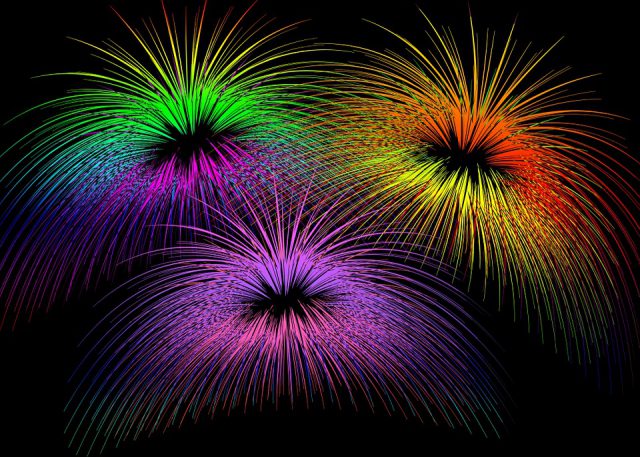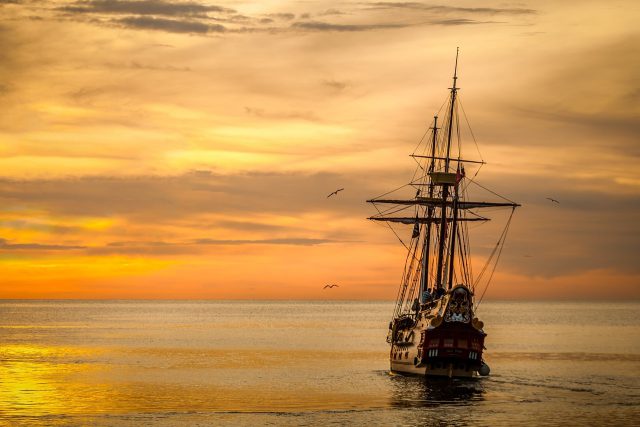Introduction
A backdrop refers to the background behind the subject, typically a piece of fabric, paper, or a painted wall. The backdrop sets the mood and tone for the image and creates a visual separation between the food and the background in food photography. Backdrops can be solid colors or patterns and are often chosen to complement the colors of the food or to create a contrast.
On the other hand, a surface is a material on which the food is placed. This could be a table, a cutting board, a plate, or any other surface that can support the food. The surface also plays an important role in the overall composition of the image and can be chosen to complement or contrast the backdrop.
While the backdrop provides the background for the image, the surface is the foundation upon which the food is presented. Both the backdrop and surface are essential elements in food photography, and choosing the right combination can greatly enhance the overall aesthetic of the image.
In this article, the term “backdrop” is used to express both the “background” and “surface”

Importance of using the right backdrop
Using the right backdrop can significantly improve the quality of your food photographs. A good backdrop can make your food stand out, highlight its colors and textures, and create an appealing visual story.
On the other hand, a poor backdrop choice can detract from the food, making it look unappetizing, flat, or uninteresting. Therefore, choosing the right backdrop is crucial in food photography to capture the essence of the dish and convey its deliciousness to the viewer.

Overview of the article’s content
In this article, we will explore the different types of food photography backdrops, the factors to consider when choosing one, and some tips for using them effectively. By the end of this article, you’ll have a better understanding of the various options available and how to use them to enhance your food photography.

Types of food photography backdrops
-
Paper backdrops
-
Seamless paper
Seamless paper is a popular choice for food photography backdrops because of its versatility, affordability, and availability in a range of colors. It’s made of heavy-duty paper that comes in large rolls and can be easily cut to fit your shooting surface. Seamless paper is ideal for creating a smooth, clean, and consistent background for your food photographs.
-
Printed paper
Printed paper backdrops offer more variety and creativity options than seamless paper. You can find printed paper backdrops with various patterns, textures, and designs that can add a unique look and feel to your food photography. Some popular printed paper options for food photography include marble, wood, and brick textures, among others.

-
Fabric backdrops
-
Muslin
Muslin is a popular fabric choice for food photography backdrops because of its affordability, versatility, and soft, textured look. It comes in a range of colors and can be easily draped or hung to create a beautiful background for your food photographs. Muslin backdrops are also lightweight and easy to store, making them a convenient option for photographer’s on-the-go.
-
Canvas
Canvas backdrops are another popular fabric option for food photography. They are more durable and long-lasting than muslin backdrops and can handle more wear and tear. Canvas backdrops come in a range of colors and textures, such as linen or burlap, which can add a rustic, organic feel to your food photographs.
-
Polyester
Polyester backdrops offer a glossy and sleek look that can enhance the visual appeal of your food photographs. They are durable, wrinkle-resistant, and easy to clean, making them a popular choice for commercial food photography. Polyester backdrops come in a range of colors and patterns, including solid colors, gradients, and abstract designs.

-
Natural backdrops
-
Wood
A wooden backdrop is commonly used in food photography because it provides a natural and rustic look to the photo. It adds warmth and character to the image and is perfect for highlighting food dishes with earthy colors. The disadvantages of wooden backdrops are that they can be difficult to maintain since they absorb liquid and require extra care while cleaning.
-
Stone
Stone surfaces like slate or granite can give a more modern and sleek look to the photograph. The advantages of the slate backdrop are that they are easy to clean, durable, and water-resistant. The downside of slate backdrops is that they can be heavy and prone to cracking or chipping.
-
Marble
A marble backdrop is widely used in food photography because it gives a luxurious and classic look to the picture. The benefits of the marble backdrop are that it can highlight the colors and textures of the food. It is also easy to clean and maintain. The disadvantage of marble backdrops is that they are heavy and breakable.

Factors to consider when choosing a food photography backdrop
1. Color
Choose a backdrop color that complements the colors of your food. Neutral colors like white, gray, and black are great for most foods, but you may want to use a bright or colorful backdrop for foods with a more subdued color palette.
2. Texture
Look for backdrops with interesting textures that will add depth and dimension to your photos. Consider natural textures like wood, marble, or stone, or look for artificial textures like fabric or wallpaper.
3. Size
Choose a backdrop that is large enough to accommodate the size of your food and your camera’s frame. You may need to use multiple backdrops to capture different angles or larger dishes.
4. Light reflectivity
Consider the lighting in your shooting environment when choosing a backdrop. Reflective surfaces like glossy paper or metal may cause glare, while matte surfaces like fabric or wood may absorb too much light.
5. Durability
Look for backdrops that are durable and easy to clean, as food photography can be messy. Vinyl and paper backdrops are common choices as they are affordable, lightweight, and easy to wipe down.

Tips for using food photography backdrops
1. Choose the right one
Choose a backdrop that complements your food: Consider the colors, textures, and overall aesthetic of your food when choosing a backdrop. A neutral or muted backdrop can help the food stand out, while a more colorful or patterned backdrop can add interest and depth to the photo.
Avoid backdrops that are too busy or distracting. Your food should be the star of the show, so a simple and subtle backdrop is often the best choice.
Experiment with different materials to see which ones work best for your style and the type of food you’re photographing.
2. Placement and angle
Backdrops can have a big impact on the way light reflects and bounces off your food. Play around with different angles and lighting setups to see how the backdrop affects the overall look of the photo.
3. Cleaning and maintenance
Taking proper care of your photography backdrops is important to ensure their longevity and maintain their quality. Here are some tips for caring for your backdrops:
Store them properly: When not in use, store your backdrops rolled up or flat in a clean, dry, and cool area. Avoid folding them as this can create creases that are difficult to remove.
Clean them regularly: Depending on the material of your backdrops, clean them regularly with a soft cloth, brush, or mild cleaning solution. Avoid using harsh chemicals or abrasive materials that can damage the surface.
Handle them with care: When using your backdrops, handle them with care to prevent scratches, tears, or other damage. Avoid placing heavy objects on them or dragging them across surfaces.
Iron or steam out wrinkles: If your backdrops become wrinkled, use a steamer or iron to gently remove them. Be careful not to overheat the material or leave the iron in one spot for too long.
Replace when necessary: Over time, backdrops may become worn, faded, or damaged. If this occurs, it may be time to replace them to maintain the quality of your work.

Best Food Photography Backdrops
Duo Boards

The V-Flat World’s Duo Boards come in two handy sizes – 24 x 24 and 30 x 40 inches and have double-sided panels. They are printed using 1000 dpi ultra-high definition, making them an ideal choice for food photography backdrops. With so many options available on the market, the V-Flat World’s Duo Boards are the ultimate choice for their quality materials, affordability, and limitless creative potential.
V-Flat World boasts an impressive assortment of glare-free backgrounds, including painted walls, marble, and tiles.
SnapIt Boards 2-Sided Photo Backdrop Boards

Snapit provides a range of photo backdrops with kits that feature a diverse selection of photo-realistic backgrounds, such as old brick walls, marble, and colorful weathered wood, which are ideal for food photography if you want to create authentic settings.
Snapit offers various packages at different price points, with their most popular kit comprising 2 double-sided backgrounds, allowing for a total of 4 backdrops. Alternatively, you have the option to purchase single panels if you don’t require the entire background collection.
Replica Surfaces

The bundle option offered by this brand is a significant draw for photographers, allowing you to choose up to 6 panels of your preference with increasing discounts based on the number of panels purchased.
Their 23 x 23-inch panels are lightweight and portable, making them easy to transport to any location, and they offer a broad selection of backdrops to choose from, such as cement and white marble.
In addition to their photo backdrops, their website also provides helpful photography tips, including free tutorials for beginners and paid courses for professionals interested in advancing their skills.
Beiyang Backdrop Boards

This product is composed of two food photography props made of high-quality PVC material that is waterproof and easy to clean with a damp cloth. The 3D printing technology produces clear and realistic patterns on the surface.
The back of each prop features a white surface that can also serve as a reflector. Designed for desktop photography, videography, and commercial advertisements, these 2PCS photo backdrop boards (marble+concrete) can be used as photography backdrops for food, cosmetics, flowers, jewelry, clothing, and more. With no need for additional filters, these boards can help produce great pictures.
Goshoot Photo Backdrop Boards Kit

Goshoot provides a budget-friendly alternative to V-flat World’s Duo Boards and Replica Surfaces, similar to Beiyang, with a straightforward package that includes two double-sided panels measuring 24 x 24 inches. The panels are rigid and waterproof, ensuring their durability.
While Goshoot’s selection is minimal compared to others on the market, this simplicity appeals to some food photographers. The kit features a choice between two double-sided boards, either wood and leather or cement, and wood, which are effortless to use without much decision-making required. Simply select your preferred option, set them up, and you’re ready to start shooting.
Allenjoy Double-Sided Wooden Photography Background

This item is available in one size, measuring 34.4 x 15.7 inches (88 x 40cm). It is made of durable coated paper with a stiff material that is resistant to wrinkling and has a clear pattern with no color difference.
Designed for desktop photography or videography, this item is suitable for a variety of occasions such as commercial advertisements, food, cosmetics, flowers, jewelry, clothing, etc. Great pictures can be taken without the need to add any filters, and both sides feature different patterns.
To avoid creases, the item will be shipped rolled up, and if it’s difficult to unfold, try rolling it from the opposite side. It is lightweight, anti-dirty, and covered with a plastic film, making the surface waterproof. However, the edge is not waterproof, so it can be wiped but not washed.
Conclusion
Choosing the right backdrop is essential in photography as it can greatly impact the overall look and feel of an image. Here are some key reasons why choosing the right backdrop is important:
- Sets the tone and mood: The backdrop you choose can help set the tone and mood of the photograph. For example, a bright and colorful backdrop can create a cheerful and energetic atmosphere, while a dark and moody backdrop can evoke a sense of drama and intensity.
- Complements the subject: The backdrop should complement the subject of the photograph, rather than detract from it. The backdrop should not be too busy or distracting, but rather serve to enhance the subject and draw the viewer’s attention to it.
- Creates visual interest: A well-chosen backdrop can add visual interest and depth to the photograph. This is particularly important in portrait and still-life photography, where a plain or uninteresting backdrop can make the subject look flat and unappealing.
- Consistency and branding: Choosing a consistent backdrop for your photographs can help create a cohesive look and feel across your portfolio or brand. This can help you stand out and be recognized for your unique style.
Remember, the backdrop should enhance the overall aesthetic of the image and make the food look as appetizing as possible. Experiment with different backdrops and find what works best for your specific subject and style.
Related posts
Food Photography Tutorials – The Ultimate Guide
Portrait Studio Backdrops – Types And Recommendations
How To Make Digital Background In Photoshop
Thanks for reading, I hope you enjoyed the article, in case you have any questions just drop them below & I will be happy to answer you.
All photos are from depositphotos
If you enjoy the site, don’t forget to subscribe, we will only inform you when a new article is posted.









Hi Amin, it’s a fantastic resource! Your detailed explanations of different materials like wood, marble, fabric, and tile are incredibly helpful.
I was wondering if you have any recommendations for DIY backdrops or creative ways to repurpose household items to create unique backgrounds? I’d love to experiment with some cost-effective options. Thank you.
Thank you for your comment, I’m glad to hear that you found it helpful in selecting the right backdrop for your food photography.
Regarding your question about DIY backdrops, there are many creative and cost-effective options for creating your own food photography backgrounds. Here are a few ideas to get you started:
Wrapping paper or scrapbook paper: These can make great backdrops, particularly for smaller items like desserts or snacks. Look for patterns or colors that complement the colors of your food.Textured fabrics: Fabrics such as burlap, linen, or canvas can add a nice texture to your background. You can even dye or paint them to create custom colors or patterns.Tiles or flooring: If you have leftover tiles or flooring from a renovation project, they can make great backdrops for food photography. Look for interesting patterns or textures that complement your food.Wooden boards or pallets: You can often find wooden boards or pallets for free or cheaply, and they make great rustic backdrops for food photography. You can sand them down and stain or paint them to create custom colors or patterns.Foliage or flowers: If you have access to a garden or outdoor space, foliage or flowers can make great backdrops for food photography. Look for interesting leaves or blooms that complement your food.
These are just a few ideas to get you started, but there are many other creative options for DIY food photography backdrops. The key is to experiment with different textures, colors, and patterns to find what works best for your style of food photography.
I just stumbled upon your article about the best food photography backdrops, and I have to say, I absolutely loved it! As a foodie and amateur photographer, I always struggle with finding the perfect backdrop for my food photos. Your article was not only informative but also provided me with some great inspiration for my next food photography shoot.
I especially loved your tip on using textured backgrounds to add depth and interest to the photo. I never thought of using things like rustic wood or marble slabs as a backdrop, but now I can’t wait to try it out. Your photos were stunning and really showcased how the right backdrop can completely transform a photo.
I also appreciated the variety of backdrops you recommended, from affordable options like fabric and paper to more high-end choices like acrylic and glass. Your article made it clear that there’s no one-size-fits-all solution for food photography backdrops and that experimentation is key.
Thank you for your kind words! I’m glad that my article on food photography backdrops was helpful and inspiring to you as an amateur photographer.
As you mentioned, experimenting with different textures and materials can really add depth and interest to food photos. I’m happy to hear that my recommendations for a variety of backdrops, from affordable options like fabric and paper to more high-end choices like acrylic and glass, were helpful to you. Finding the right backdrop for a particular dish can take some trial and error, but it’s worth the effort to create a truly stunning photo.
If you have any questions or if there’s anything else I can help you with as you continue to explore food photography, please don’t hesitate to reach out. Best of luck with your future shoots!